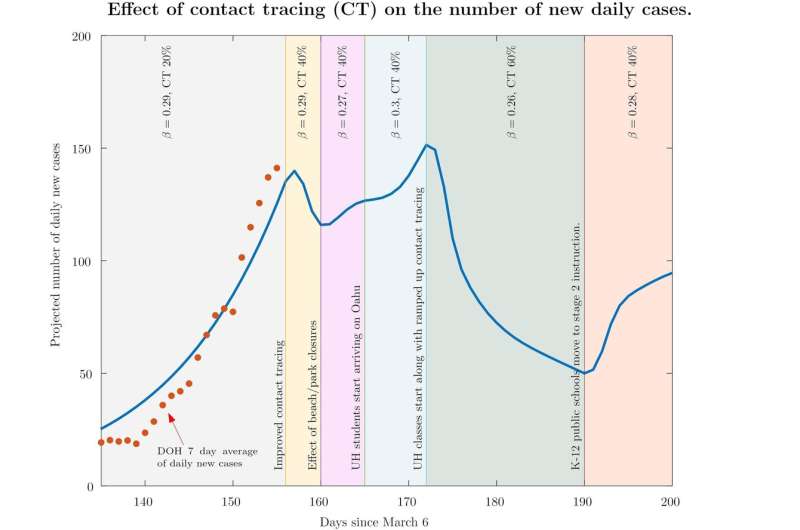Control COVID-19 curve, don't crush it, research says

A proactive targeted approach of aggressive COVID-19 testing and contact tracing to create a more sustainable solution over a long-term period is recommended by new University of Hawaiʻi at Mānoa research. A team of experts led by Department of Mathematics Professor Monique Chyba created the mathematical model. This project is funded by a one year, $199,000 grant from the National Science Foundation.
Chyba recommends ramping up testing and contact tracing when changes occur, such as when students return to schools, businesses welcome back customers with reduced restrictions and when the state eventually reopens to tourism.
The mathematical approach was formed with the premise that COVID-19 will likely never disappear in Hawaiʻi; it is a matter of controlling it. The targeted approach is key to avoid a complete lockdown and save the economy.
It takes into account the number of reported daily cases, probabilities on when those diagnosed with COVID-19 will become symptomatic after being exposed and possible hospitalizations, probabilities asymptomatic COVID-19 cases will be detected through contact tracing, and past government mitigation efforts, such as a statewide lockdown.
"This is an optimal control problem. By controlling mitigation measures such as travelers' quarantine and the amount of testing and contact tracing, we can bring the curve to a desired state," said Chyba, who is also a member of the Hawaiʻi Pandemic Applied Modeling work group. "An exponential decay is not the long term solution, it must be done in a more gradual manner."
According to the model, the targeted approach could result in a 35 percent reduction of daily COVID-19 cases in Hawaiʻi on September 22 from the numbers on August 6. That means we would be under 100 cases on September 22, if this targeted approach is followed. This considers improved overall contact tracing, the effects of beach and park closures, and students returning to school in person. Then, strategic targeted approaches would continue to bring the curve lower.
"The downside of this approach is that it takes longer, and I understand that it comes with consequences, but we might not have a choice at this point," Chyba said. "We went from the lowest count to one of the highest percentage increases in the nation. We have to accept that there will be waves. Let us control them actively and not after the fact."





















